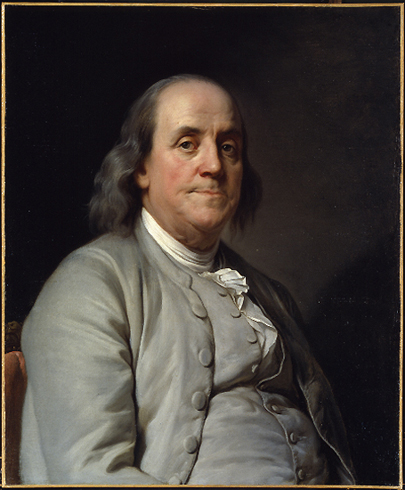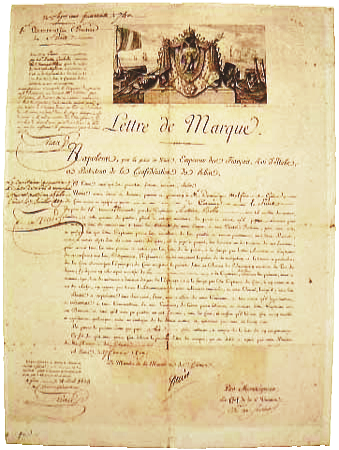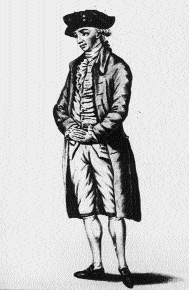It's the story of the Pirate Luke Ryan - a Dubliner who commanded an entire Black Fleet of Irish Privateers, heavily armed, expertly crewed pirate ships, that sailed under the secret orders of Benjamin Franklin, and helped win the War of Independence for the United States.
Luke's story is almost incredible (in the sense that it is hard to believe that he achieved all that he did)
It's a long story - so I'll try and tell it over 3 nights in three parts - hope you enjoy.
Luke Ryan, Benjamin Franklin’s Irish Pirate
The Dread Pirate Luke Ryan
Luke Ryan may not have been the most famous
pirate who ever commanded a ship, or even the most successful, but in a
profession that demanded quick wits, reckless bravery and the ability to talk
your way out of a tight corner, the charismatic Dublin man could certainly have
claimed to be among the craftiest.
The mid to late eighteenth century was
extraordinary time in Irish, European and American history, when Irish sailors
and captains put to sea in heavily-armed, privately-owned and licensed pirate
ships, fighting for and against the Yankees, British and French. Some made
fortunes; some were strung up or lost in battle or shipwreck. Only one would be
remembered as a hero of the American Revolution, even if it was never exactly
clear just who Luke Ryan was fighting for; Ryan’s fleet, which included the
infamous Black Prince, was part of a
private navy (that included three Irish captains and hundreds of Irish sailors)
commissioned by Benjamin Franklin to take the war to the British in their home
waters.
At a time when the fledgling United States
was fighting for its very existence, facing the might of the British Empire, Luke Ryan and many Irishmen like him
fought the Royal Navy and targeted vital
mercantile interests in Britain's home waters, offering hope to the
hard-pressed Americans and giving King George, his ministers and admirals pause
for thought.
Dublin, and especially the smaller ports
around it, were a hotbed of smuggling and semi-legal piracy in the period of
the American Revolutionary War, offering plenty of chances for men who were
willing to take a risk; Dubliner Luke Ryan was one of hundreds of young
Irishmen who seized the chance to make their fortunes in uncertain times as Britain,
France and the United States went to war.
By the time he reached his mid-twenties, Ryan was the most notorious and most successful privateer
captain operating in British waters, even if the British, whom he fought, and
the Americans, whom he served, had little idea of his true identity.
Like all the best
pirates, Ryan was devious, avoiding
the Royal Navy's men-o-war were possible, hiding his true role as
captain behind stooges and changing flags, nationalities and his very identity
as the situation demanded. However, he would use
any tactics he deemed necessary, from fire and murder to jailbreaks,
kidnapping, ransom and extortion, to add to his fortune. All ships were fair
game to the spectacularly successful young captain born in Rush, Co Dublin.
And when he was finally captured at sea as
a self-declared French officer, serving both King Louis XVI and the United
States of America, he claimed French and then American citizenship before being
tried an condemned to death at the Old Bailey as an Irish subject of the
British Crown.
Found guilty of High Treason and the
Piratical Taking of Ships at Sea (or ‘mayhem, murder and mutiny’ as the
Admiralty Court heard), Luke Ryan would survive four appointments with the
hangman, only to lose his considerable fortune to unscrupulous French bankers
and then lose his life in a Debtors Prison. When he died, the influential
Gentleman’s Magazine of London noted that Ryan’s command had ‘captured more vessels belonging to Great
Britain than any other single ship during the war. The various scenes he went
through are astonishing.’
Benjamin Franklin’s links to pirates and
privateers began in December, 1776, when, newly arrived in France as ambassador
for the fledgeling United States of America, he was facing what appeared to be
an intractable problem.
 |
| Benjamin Franklin - Friend of Pirates |
The original thirteen states, former
colonies of the British, had only just declared their independence from the
mother country.
North America still had
significant numbers of people who were loyal to the British crown but from New Hampshire down the East coast to
Georgia, the newly declared states had struck for seemed to be an impossible
goal, independence from the vastly powerful British Empire.
The Americans would find
willing allies in Britain's great rival France. But in
1776 ,they were in a desperate, almost hopeless position as they took on what
was then the globe’s pre-eminent military and economic power. And while the
Revolutionary War raged in Continental America, across the Atlantic in England,
hundreds of American citizens, mostly seamen seized in British ports on on the high seas,
were being held in prisons with no
recourse to winning their freedom.
Franklin was deeply concerned with the
plight of his fellow Americans and arranged for money and supplies to be
provided for the men held in two prisons, The Old Mill Prison in Plymouth and
Forton Prison in Portsmouth. Some prisoners had been able to escape. And
Franklin, a brilliant spy-master as well as scientist and statesman, was able
to set up networks that would smuggle these Americans to the friendlier shores
of France.
Under the normal rules of war at the time,
belligerent states could arrange for the swapping of prisoners and there were
regular exchanges of captured soldiers and sailors between France and Britain.
However, as the American revolutionaries were seen as merely rebellious British
subjects, they were not entitled to exchange. If
captured by the British, either on land or at sea, they would be held in one of
His Majesty's Prisons, treated as rebels and denied any chance of freedom,
exchange or parole.
To make matters more galling for Franklin
and the Americans, any British prisoners captured by American forces and taken
to French territory would have to be returned as part of the regular system of
exchange between the British and French.
Franklin solved his legal problem by
signing the Treaty of Alliance with France on February 6, 1778. This treaty
made France and the United States allies in the fight against the British and
allowed the Americans, now involved in raiding British sea commerce, to hold
British prisoners in French ports. Franklin had won recognition for the United
States from the French and effectively forced the British to agree to exchange
combatants. All he needed now were some human bargaining chips. And that was
where men like Luke Ryan would come in.
Luke Ryan was born outside the Co Dublin
village of Rush on 14 February 1750, the only son of Michael and Mary Ryan of
the parish of Kenure. As a young man, he had worked on the fishing and trading
boats that sailed out of Rush and also worked for the local estate as a
stable-hand from the age of ten. At twelve he started work in a local boatyard
and was then apprenticed to Edward King of Ringsend as a ship’s carpenter in
1766. Luke appears to have been a restless youth and after giving up his
apprenticeship, he found his way to Dunkirk in France to join Dillon’s
Regiment, one of the regiments making up the Irish Brigade of ‘Wild Geese’
(Irish soldiers who left for the continent after the Williamite wars of the
previous century) fighting in the service of the French crown.
The Wild Geese had been scattered across
the continent and the tradition of Irish men fighting under foreign flags, for
the French, Spanish, Austrians, and various Italian states, would continue
right up to the twentieth-century. This tradition would also see Irishmen fight
and die on both sides of the American Civil War, on a number of occasions
coming into direct conflict on the battlefield, such as during the terrible
slaughter at Gettysburg and at Fredericksburg in December, 1862.
Ryan might have remained as one of the
thousands of Irishmen fighting on the continent, if it was not for the outbreak
of the American War of Independence. When war started in 1775, the Americans
could just about prevent their citizen militias from being overrun and
decimated by British forces in the thirteen former colonies. On land, the
nascent Continental Army was fighting for its survival against significantly
more powerful and experienced British forces. Conventional war at sea against
the vast power of the Royal Navy was inconceivable.
But hit-and-run tactics were just about
workable for small, fast, heavily-armed and expertly-sailed US ships. And if these ‘experts’ couldn’t be found within the ranks of
the US navy proper, then the Americans could use the ancient practice of
outfitting and licensing private warships or ‘privateers’, simply by issuing
them with ‘letters of marque’ – government licenses
allowing the holder to attack vessels owned by the enemy and the bring them
before the admiralty. Privateers could also claim the right to act
against port installations or even civilian property and goods on enemy land,
under the cry of ‘seize burn or destroy’. It was often desperate, cut-throat
work, involving long sea chases, brief but bloody engagements, lightning raids,
kidnapping-for-ransom and trickery (privateers would carry many flags and use
any and all deception to lure in unsuspecting victims).
Though
‘privateers’ with a Letter of Marque worked for profit, it could be considered
a patriotic occupation and was certainly considered to be several steps above
out-and-out piracy. However,
they occupied a hazy legal-ground, half-way between
pirates and ships of national navies, and some, like Ryan, were not against
acting as smugglers and out-and-out pirates.
 |
| A Square Rigged Brig of the Era |
By the second year of the War of
Independence, the American Continental Navy was already beginning to cause
havoc in the channel and the Irish Sea. Commissioned officers such as the
legendary Scottish-born captain John Paul Jones (in the Ranger) and the
Maryland merchant captain turned US navy commander Lambert Wickes launched
daring raids along the coast of Scotland, England Wales and Ireland.
Early in 1777, the Dublin newspapers were
carrying alarming reports of three US privateers, the Lexington, Reprisal
and Dolphin, sweeping down the Irish Sea and seizing thirteen British
vessels, which were either burnt or taken under sail to France. At the same
time, there were reports that smugglers in Rush, North County Dublin (home port
of Luke Ryan) had attacked and driven off Revenue Men and militia sent to stop
their illegal trade. The newspapers carried warning of the great threat to
vital Irish Sea merchant trade (including the highly valuable Linen Ships that
sailed from Ireland) with reports that crafty Irish smugglers were hoisting
American colours, in order to ‘avoid the interruption the revenue cutters might
give to their trade’.
Amidst the growing lawlessness, public
outcry and dire warnings that Yankee pirates were coming to cut the throats of
Dublin merchants while they slept in their beds, the British government came
under increasing pressure to act. The Royal Navy, already struggling to supply
the forces fighting in the US, began to recruit privateers in Ireland and
Britain to meet fire with fire. At the start of 1778, a smuggler turned
privateer, captained by John Harding of Loughshinny in Fingal, North County
Dublin, was ready to sail from Dublin with a crew of around 150 local men.
Their ship was called, fittingly enough, the Dublin. The Fingallian
sailors were renowned as some of the toughest and most skilled sailors in
Europe, seasoned by long and arduous fishing voyages and ready to turn smuggler
and outfox the Revenue men whenever the chance arose. Fast and heavily-armed,
the ship had a letter of marque from the English and sailed as an Irish
privateer against the Yankees.
Luke Ryan, who had become a partner in a
lucrative smuggling operation with a cousin of his called Edward Wilde out of
Loughshinny, was soon getting in on the act, converting their smuggling vessel,
the Friendship to go to war. In February 1778, the Friendship finished outfitting at Sir John Rogerson’s Quay in
Dublin and put to sea as a privateer. She was a fast cutter, armed with six
eighteen-pounder guns, able to chase down and then close with her prey, which,
as she was sailing under a letter of marque from the English crown, was
supposed to be American shipping.
 |
| A letter of Marque - a licence for Piracy |
However, Ryan, the former French soldier
who had connections to the Privateer’s port of Dunkirk in France, must have
decided that as Yankee ships were hard to come by (and devilishly hard to take)
there were far richer pickings in the British merchantmen who crowded into the
channel, bringing treasure and trade from all over the world to the ports of
southern England.
Ryan may have set out
with a British letter of marque but in early 1779, the Friendship had a secret change of
ownership, with Ryan and his partner Wilde (who sometimes went by the
nom-de-guerre ‘McCatter’) entering the service of the Dunkirk based businessman
Jean Francois Torris.
The Irish owned ship had
effectively changed sides and was now acting for French backers against the
British, with the American revolutionaries set to benefit from their
activities.
Luke Ryan was about to go to war.....
* Thanks for reading Pt 1 - part 2 Here.

Thank you so much for writing these articles, I grew up in Rush and never heard of Captain Luke Ryan. As I now live in the US it's interesting knowing my hometown has a connection to the American Revolution.
ReplyDelete